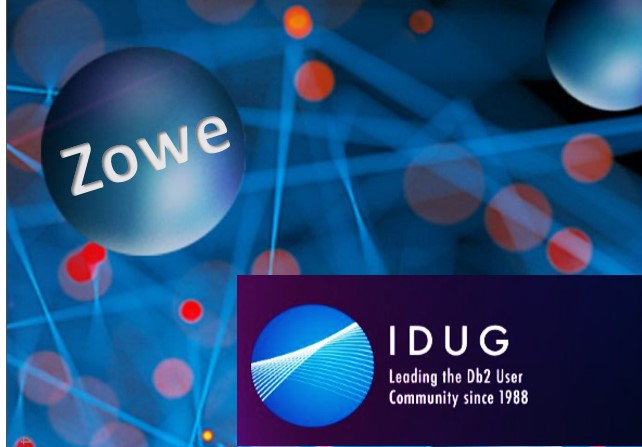Terrible quote usage I know… But now, with the all new and Agile Db2 12 being picked up and used globally, I think it is time to review a few things that companies and individuals must do, or at least plan, in this “Brave New World” of ours.
To wrap up at the end, I will delve into the idea of using ZOWE to help you test!
This Db2 12 testing checklist helps to navigate into the Db2 Continuous Delivery world, well supported by Zowe, the modern IBM z/OS GUI
| Table of contents – Db2 12-testing-checklist |
The Db2 12 Testing Checklist
1. Do not be afraid of the clones!
To even begin to start testing Db2 12, you’ll need to start with a complete production clone. I know a lot of people get suddenly scared about this due to audit requirements or, more commonly, space requirements. I mean, who can possibly support a complete 100% data clone of their productive system?
A real clone or a partial clone?
Of course you do not actually need all of your data! All you must have is the Db2 Catalog and Directory, all of the user objects should be DEFINE NO style empty shells. After all, do you really need TBs of productive data to do a test run? Nope! So now we have removed two major problems (Space and Audit) from the list of testing problems.
2. Collect as much workload as you can
You’ll need to gather as much of your current executed SQL as you possibly can. At best 13 months is a good target. “Not possible” I hear you all scream – “Oh yes it is!” say I.
3. Dynamic & Static SQL: Store it cleverly away
You do not need the same SQL statement 12,000,000 times. Just once, but with an execution count. Store the dynamic SQLs and the retrieved Static SQLs away somewhere nice and safe with a COMPRESS YES to save room, and then you can easily get 13 months of data. Another major problem gone from the list of testing problems.
4. Gather your friends close but your enemies closer – IFCID376
Make sure you are running with IFCID 376 always on and everywhere! Test, QA and Prod. The moment it starts spitting out possible “problems”, start trying to track down the causing event (SQL) and verify that it is OK, or get a code change implemented. This only has a little to do with agile Db2 12 but should be on at every shop anyway!
But I don’t get the Dynamic SQL!
You do if you are fast and good enough! If you are permanently snapping the DSC and catching the flushed statements, then you can indeed find out the SQL that caused the IFCID. Another major problem disappears from the list of testing problems.
5. Access Paths a go go
Now it really makes a lot of sense to EXPLAIN all of the SQL that you have before and after the Db2 12 Functional Level (FL) change to see if just flipping to, for example, FL 504 caused access paths to head south… This is something you should all be doing now as well of course. Always validate the access path before being forced to do a REBIND or PREPARE. This way you will not get any nasty surprises… Another major problem vanishes from the list of testing problems.
6. Execute the SQLs
I have one last thing for you…
Take all of the SQL that you have just processed and transform it so it can actually execute.
- Logarithmically reduce the execution count and execute all of the SQL while monitoring all of the Db2 KPIs – On the Clone, of course.
- Then reset the world back to your starting Clone, do the FL change and then re-execute all the SQL again.
- Once finished, compare all of the KPIs – looking for outliers as there has only been the FL change then.
Any differences you see should be just “background noise” but there could also be some nasties in there. This will light them up so that the root problem(s) can be found and corrected way before you actually do the FL change in production.
Well done, you’ve made it!
That’s it! With all these processes set up and fully automated you can actually do repetitive pipeline tests within hours instead of weeks or months or never!
7 – Db2 12 test-Review:
What does this mean for me?
Well,…
- You need to get a fast, good, automated Cloning system in place.
- You need to get a fast, good, automated IFCID 376 system in place.
- You need to get a fast, good, automated SQL workload collection system in place.
- You need to get a fast, good, automated Access Path comparison system in place.
- You need to get a fast, good, automated SQL replay system in place.
… this means :
” Continuous testing in a continuous development world “…
You might, in fact, need to actually buy some software that does all this for you…
May I introduce you to our newest member of the SEGUS/SEG Family:
Db2 Continuous Delivery Deployment Check
is the software that does all of this, and more!
Check out our website for details of how this software really helps in :
- Reducing the time to test
- Enabling you to actually go forward with a good, clear conscience!

8 – ZOWE – Open Source zUI – to the rescue?
You have probably heard of ZOWE by now, the first open source software on z/OS from IBM, Rocket Software and CA Technologies (A Broadcom company). It was launched last year and is growing very quickly.
Introduction to Zowe:
- Zowe – The zGUI (r)evolution – First hands-on experience and best practices
This presentation shows you the basics you need to understand ZOWE, summarizes the steps you need to use it and illustrates how ISPF online and batch applications are supported from the GUI world. Overview
My firm is also using it now and all future developments will also be ZOWE enabled.
In a nutshell,
it allows users to interact with the Mainframe using a modern GUI.
This is based upon z/OSMF and uses work flows to actually do stuff. You define a “micro service” to do one thing and then you can string as many of these together as you like to get something done like, e.g. Provisioning a Db2 system or Cloning a Db2 subsystem etc.

Zowe at SEGUS and
SOFTWARE ENGINEERING?
We will be using ZOWE for two things:
1 – For the Installation and Maintenance of our software at customer sites
ZOWE enables people to do things that normally require “green screen” and we are keenly aware that green screen people are disappearing. If we want the z/OS platform to survive, it must be dragged, kicking and screaming, into the modern world.
2 – For using ZOWE as the front end for the users of our products
The CDDC product that I described in this newsletter will be built around ZOWE, thus expanding its usability in the market of tomorrow.
We are convinced that ZOWE is the way to go – are you?
TTFN,
Roy Boxwell
Senior Architect


